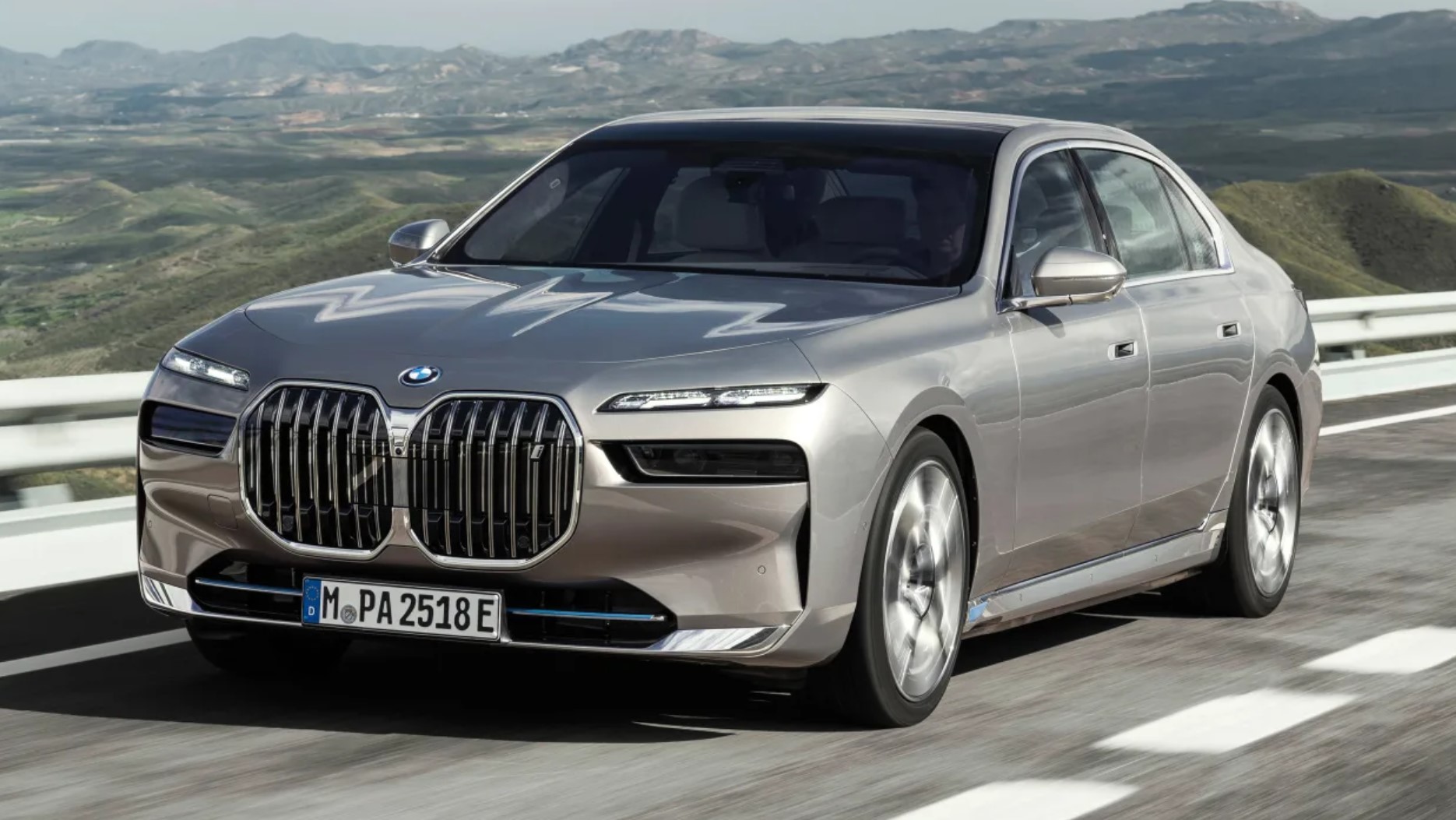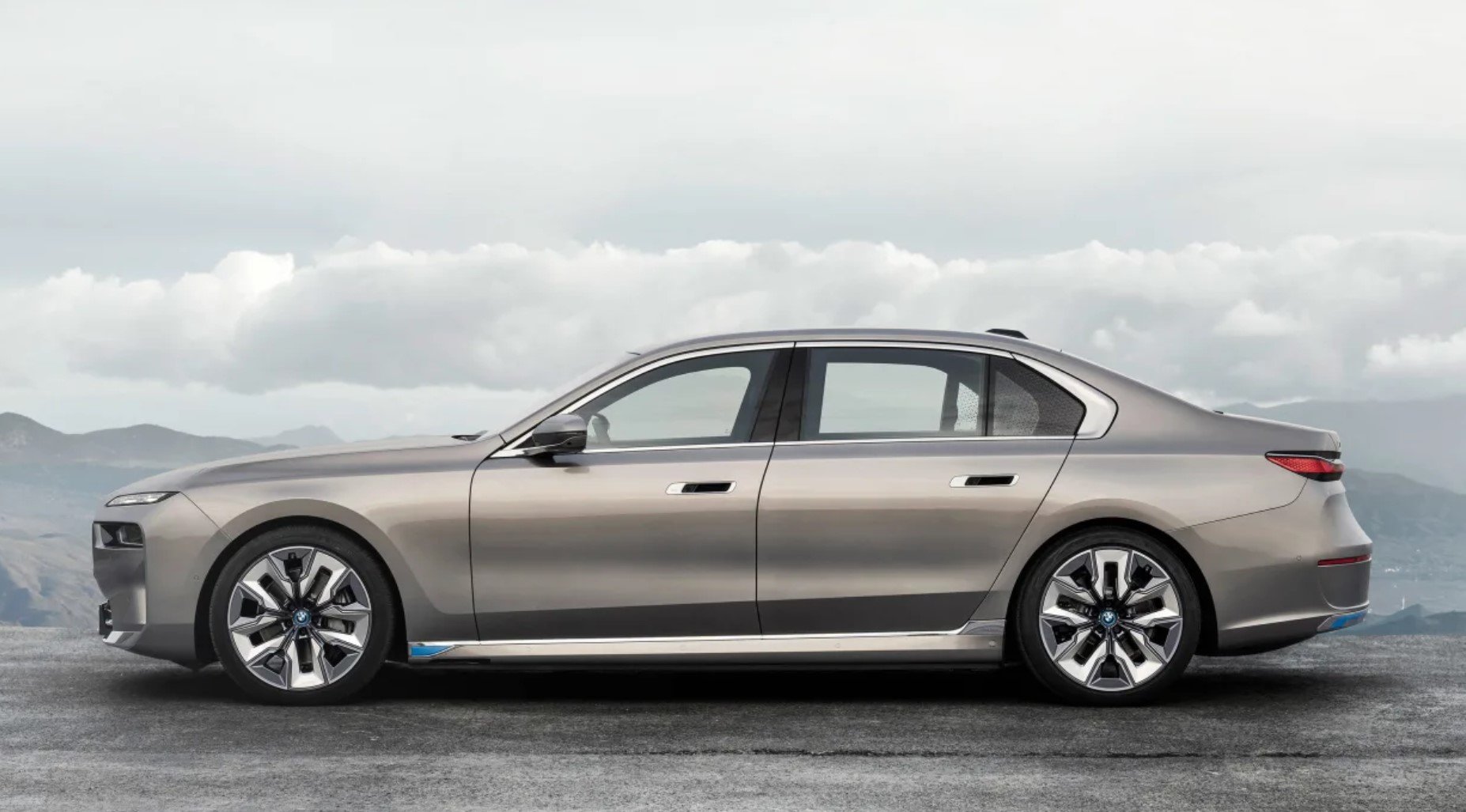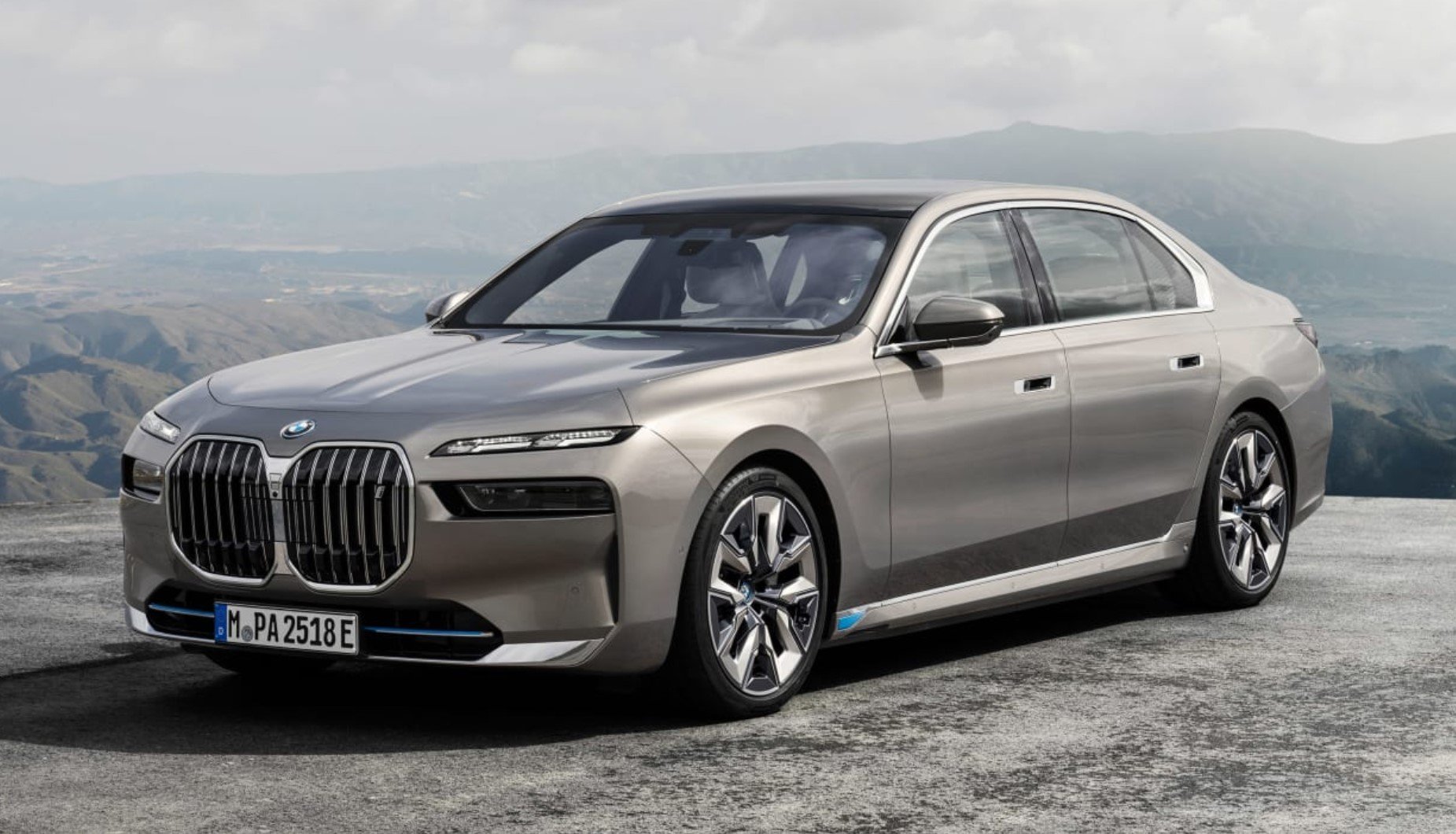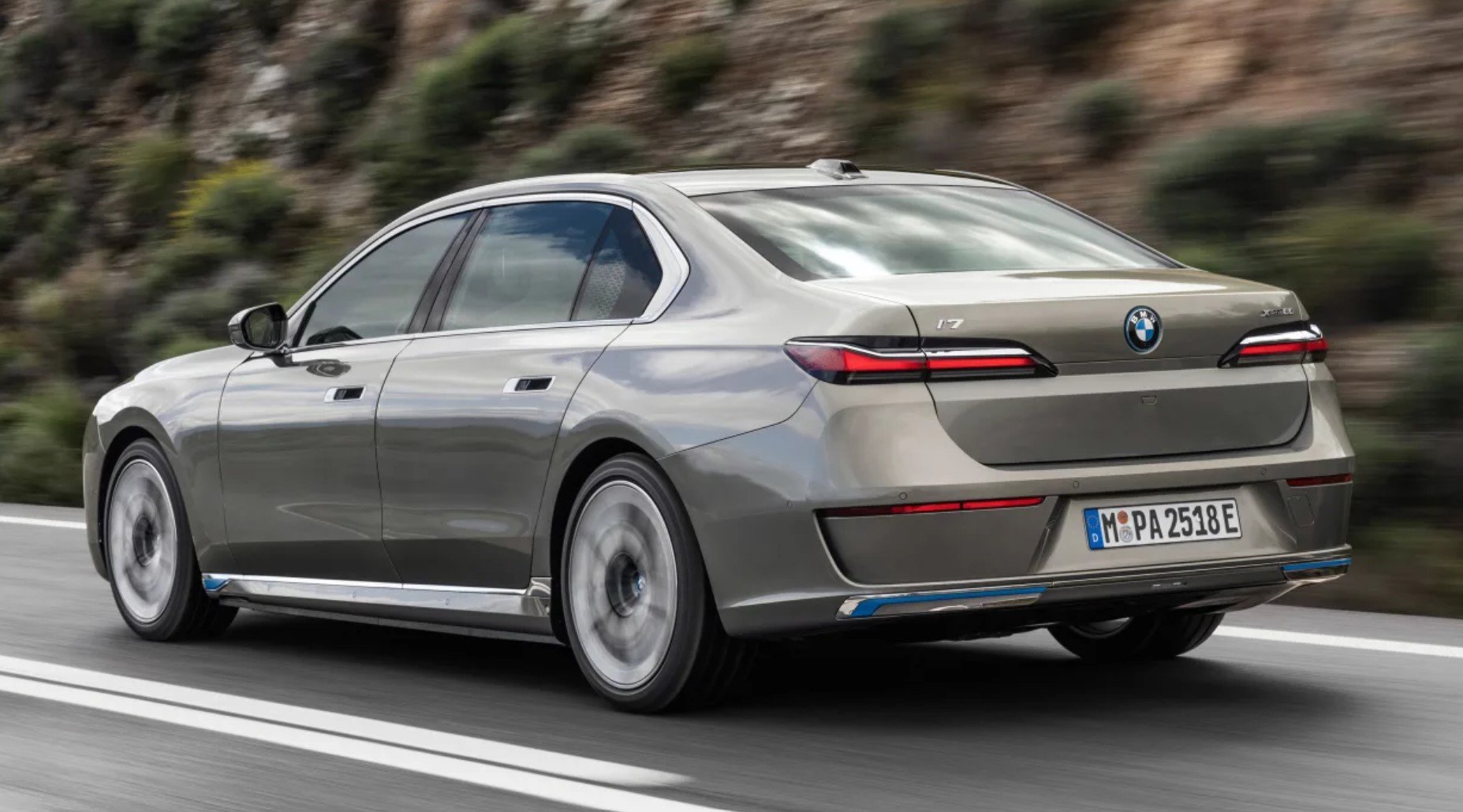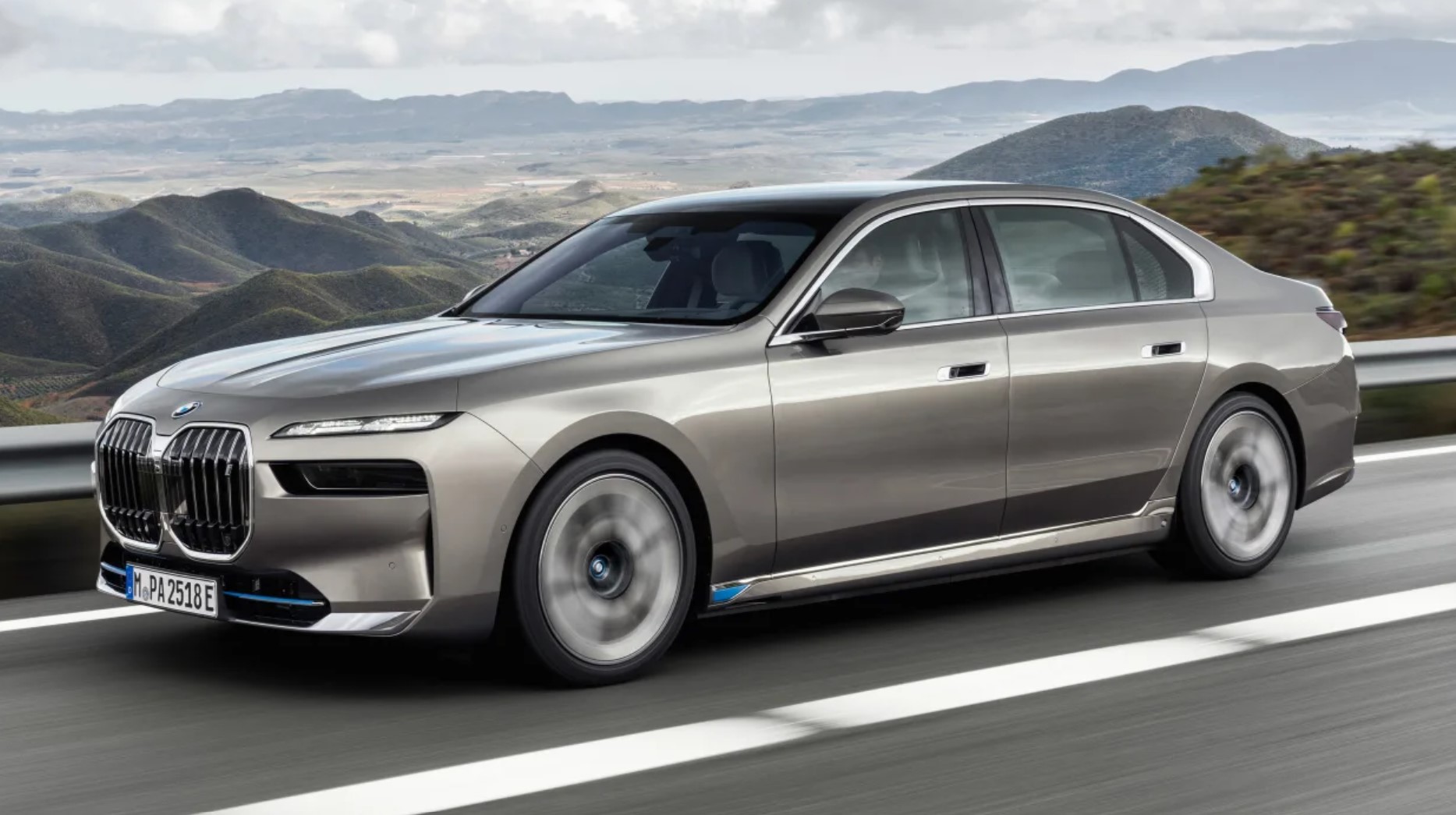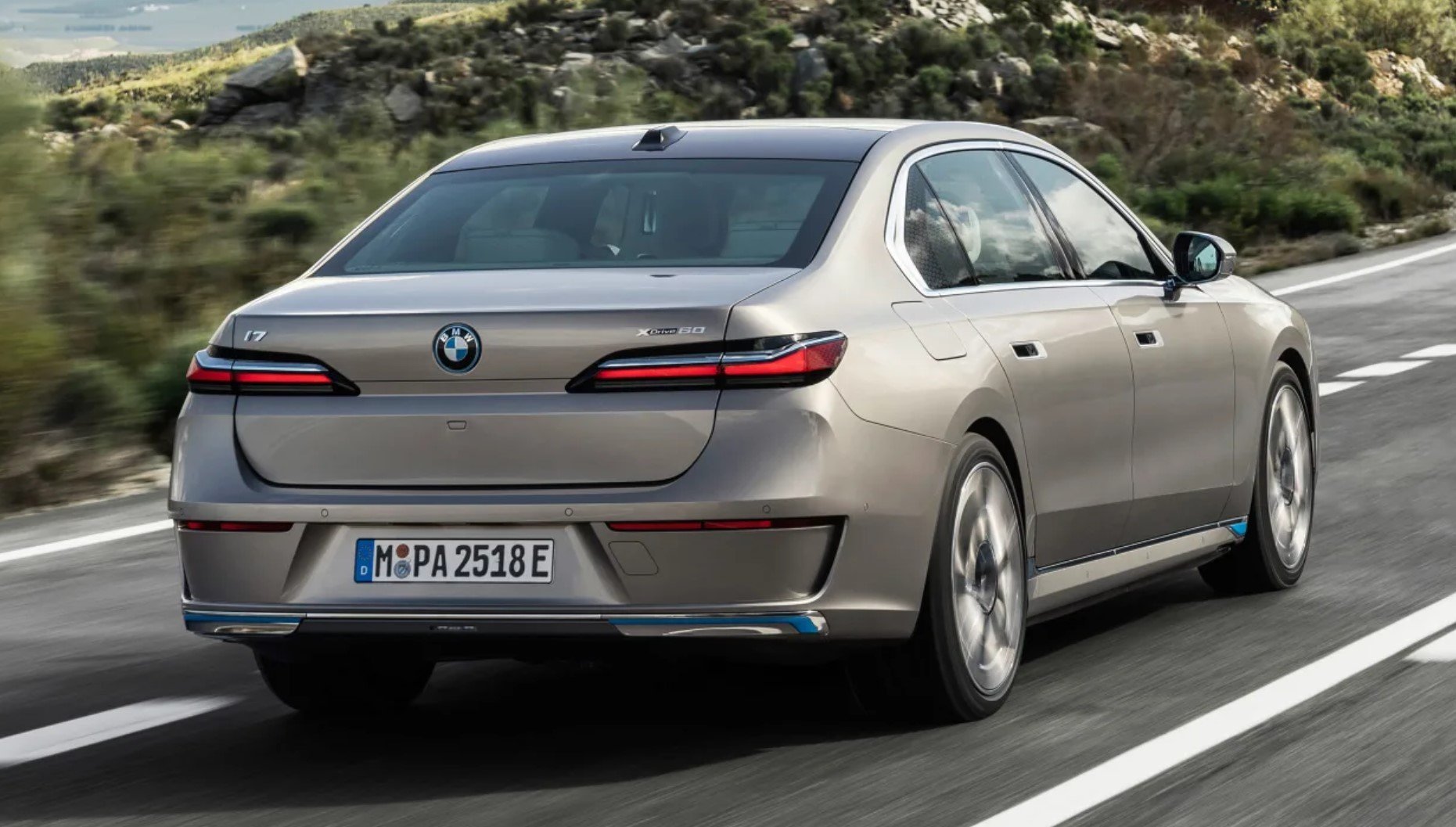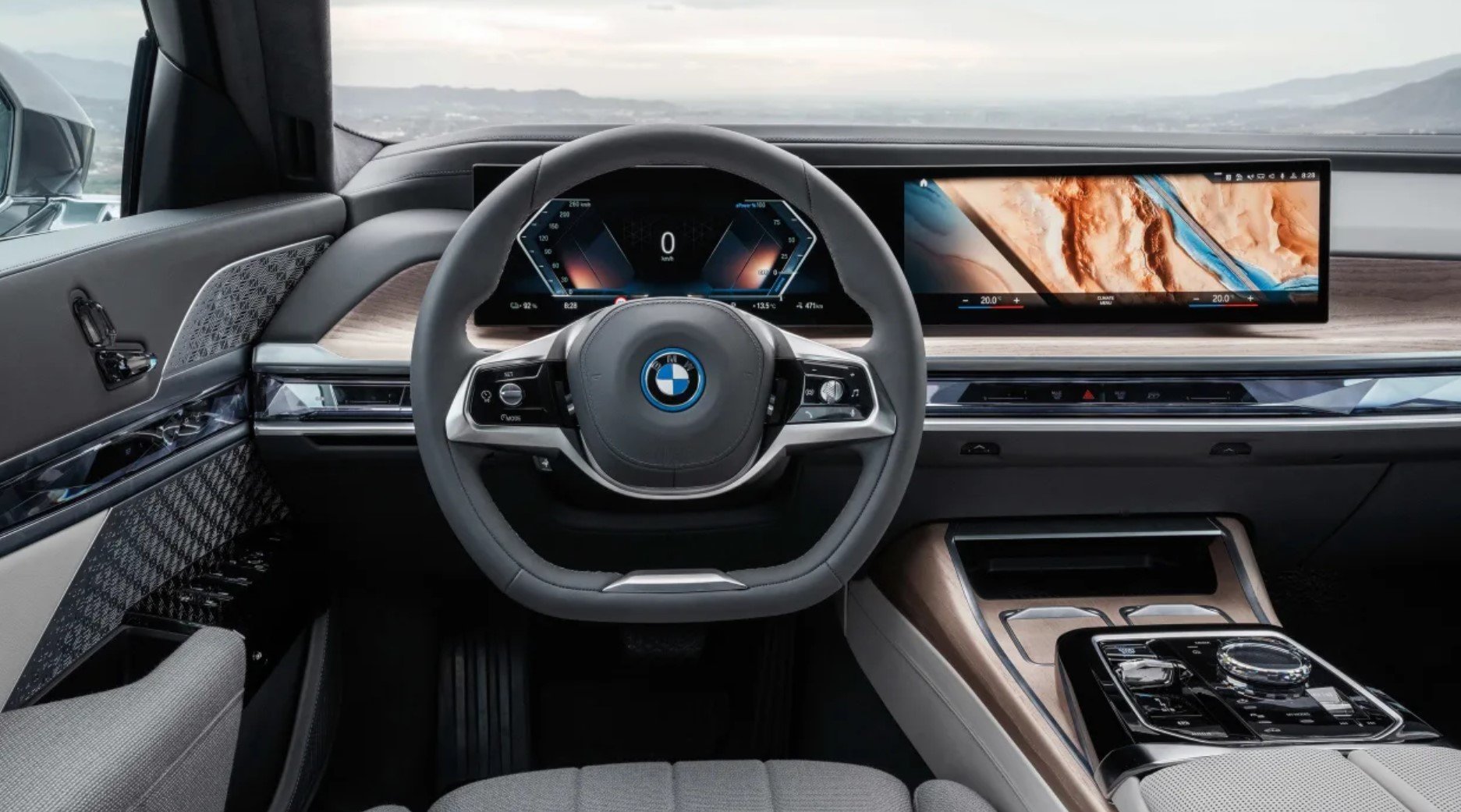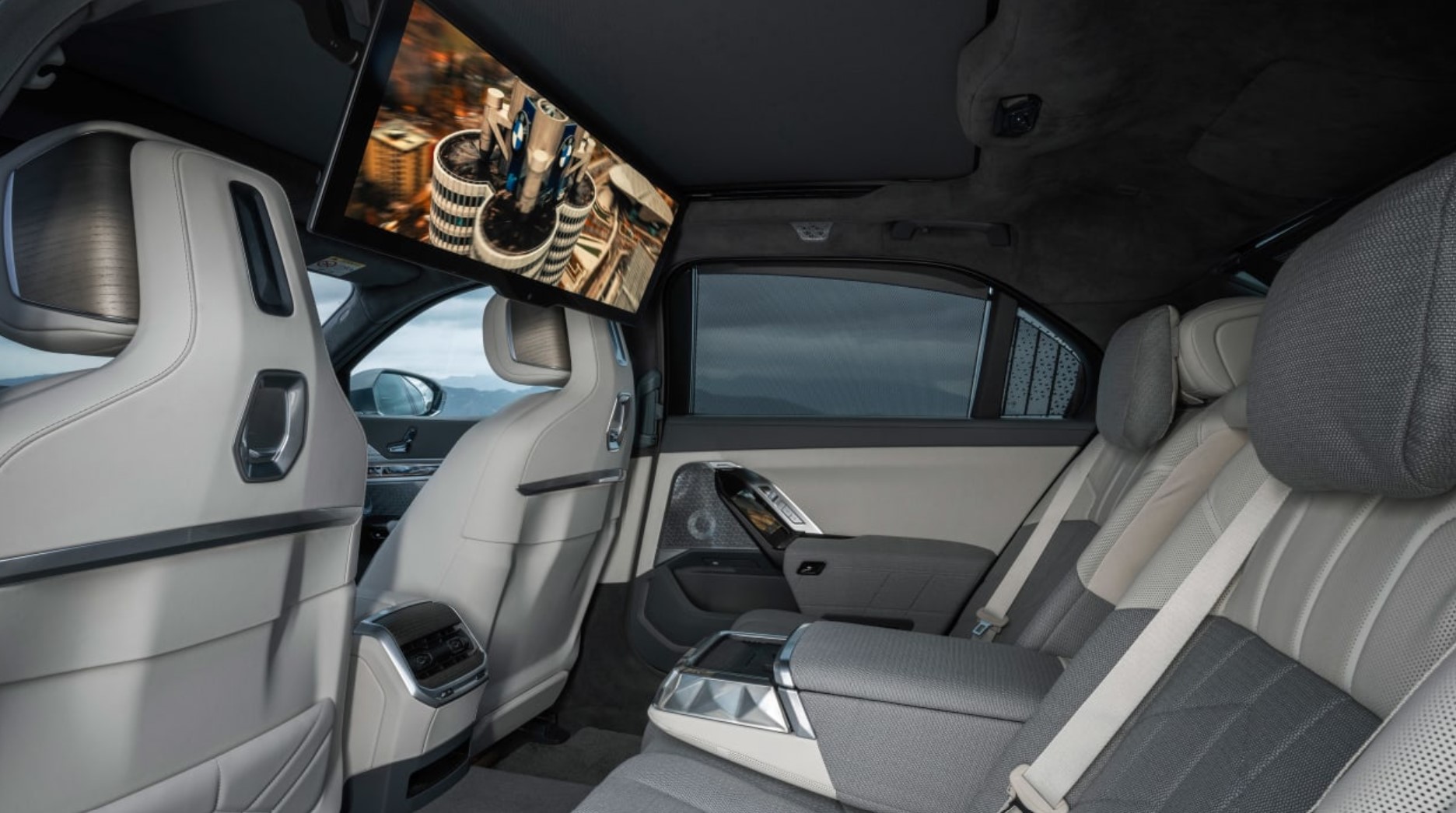BMW’s all-electrified luxury 7 Series has been re-engineered from the ground up.
The seventh incarnation of the BMW 7 Series, set to go on sale in November, has been comprehensively re-engineered as part of efforts to position it more upmarket than it has ever been. It is now significantly larger, more luxurious and more spacious than at any time in its 45-year history.
To give it the visual impact to go with its elevated positioning, BMW has provided its Mercedes-Benz S-Class rival with a bold new exterior design. The new look, driven largely by customer feedback in markets such as China and the US, instantly differentiates the new 7 Series from the sixth-generation model, launched in 2015.
“We wanted to give the new model a more striking appearance,” said Robert Kahlenberg, the 7 Series project director.
“Customers in our largest markets are generally younger and demand a more contemporary look than perhaps what we’re used to in Europe, where the average age of buyers is higher.”
Up front, the large grille, consisting of two elements as on all recent BMW models, is even larger than before and comes with BMW’s ‘Iconic Lighting’ treatment, as first brought to the facelifted 8 Series. The separation of the headlamps, with the LED running lights positioned above and the main beams in a separate recess below, add greater presence while providing close visual ties with the recently facelifted BMW X7 – part of a concerted effort by BMW to more obviously link its two luxury cars.
A three-box silhouette with familiar long-bonnet proportions characterises the overall shape, which features smooth and largely unadorned surfaces throughout. Only two feature lines are evident along the flanks, which have a pronounced shoulder running from the outer tip of the running lights through to the tail-lights. As on the BMW iX, door handles with an internal touchpad and electronic mechanism replace traditional handles.
At the rear, the boot line angles down slightly. The horizontal LED tail-lights, meanwhile, mimic the look of those used by the iX, giving the new 7 Series added visual width.
The new car has a Cd rating of 0.24, which BMW says is more important for battery range than the weight saving realised by the carbon core construction of the previous 7-series architecture.
Three different M packages add performance-inspired styling cues: M Sport, M Sport Pro and M Performance. There is also a choice of chrome and blackened styling elements, and wheels range from 19-inch as standard up to optional 22-inch as part of the M Performance styling package.
The all-electric i7 variant brings its own subtle touches, including a blanked-off grille with a BMW i brand logo as well as decorative elements within the bumpers and sills.
The 7 Series has been extended lengthways by 130mm to 5391mm, its width is increased by 48mm to 1950mm and it is 51mm taller, at 1544mm. It also no longer offers the choice of two wheelbases. Instead, all new 7 Series models have the same 3215mm wheelbase – a 5mm increase on that of the earlier long-wheelbase model.
Although the new structure is developed from the previous CLAR architecture, it is significantly different, offering pure EV, plug-in hybrid and 48V hybrid drivetrains. Work on this ‘flex platform’ began around six years ago, according to BMW sources, an indication of its complexity. The carbon core measures brought to the previous generation to save weight have been dropped to make way for a new material mix that includes more traditional steel, aluminium and titanium.
“We have altered the structure without any loss of rigidity,” said Kahlenberg.
BMW’s flagship four-door will be produced with a range of different drivetrains, including mild-hybrid petrol and diesel as well as a plug-in hybrid and pure-electric units – all powering both axles as standard.
The range is due to go on sale in 2022, although Australian pricing and specifications, including timing on arrival, is yet to be announced.
The sole diesel in the line-up, the 740d xDrive, will arrive in April 2023. It has a newly developed version of BMW’s turbocharged 3.0-litre straight-six diesel with mild-hybrid assistance and Euro-6D compliance.
With a combined 220kW and 395Nm of torque, it is claimed to provide BMW’s four-door flagship with a 0-100km/h time of 6.3sec and a top speed limited to 250km/h.
Also planned for the UK next year are the 750e xDrive and M760e xDrive. The two petrol-electric plug-in hybrids run the latest evolution of BMW’s traditional turbocharged 3.0-litre in-line six-cylinder petrol engine in combination with a gearbox-mounted electric motor.
Combined outputs are put at 360kW and 700Nm for the 750e xDrive and 420kW and 800Nm for the M760e xDrive. BMW quotes 0-100km/h times of 4.9sec and 4.3sec respectively and a governed 250km/h top speed for both models. In combination with a new 18.7kWh battery, the electric range is put at 84-90km for the 750e and 80-84km for the M760e, with the top speed in electric mode limited to 140km/h in each.
Other new 7 Series models, including six-cylinder 735i and 740i models, as well as a V8-powered 760i xDrive, will be sold in other markets.
Underpinning the new car is an air suspension system with adaptive damping and the ability to raise the ride height by 20mm when required on rough roads. All new 7 Series models also receive the latest version of BMW’s Integral Active Steering, which provides up to 3.5deg of steering angle to the rear wheels. Among the options is Executive Drive Pro – an active roll stabilisation system that uses electric motors to suppress body roll.
Inside, the 7 Series picks up on developments brought to recent new BMW models, including a curved digital display running BMW’s latest iDrive 8 operating system, as seen in the i4 and iX. It sits atop a newly styled dashboard featuring a full-width light band, housing a 12.3-inch instrument display and 14.9-inch infotainment screen. There’s also a new flat-bottom steering wheel.
Between the front seats is a control panel with a gear selector, a traditional rotary iDrive controller and other touch-sensitive controls.
Among the options is a radical 31.3-inch, 8K ‘cinema’ screen. Mounted within the roof, it folds down to offer video streaming via Amazon Fire TV in 16:9, 21:9 and 32:9 formats.
Boot capacity varies according to the driveline. Conventional internal-combustion-engine models get 540 litres, with the plug-in hybrids offering 525 litres and the i7 500 litres. An electrical fold-out towbar is available and the maximum towing capacity is 2100kg.
Further details for Australian pricing and timing will be announced locally.
Automotive Daily




